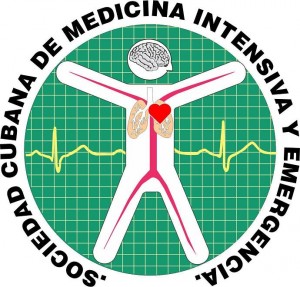Auditing Bloodstream infection in an Intensive Care Unit in Botswana
Keywords:
bloodstream infection, mortality rate, antimicrobial resistanceAbstract
Introduction: Nosocomial infections are a significant problem in Intensive Care units (ICUs) worldwide; however, very little research exists into their epidemiology and characteristics in subSaharan Africa. The largest public hospital ICU in Botswana underwent its first internal audit in 2017-18 and nosocomial infections were one of the defined study parameters.
Objectives: ICU admissions over 12 months were analyzed to establish the principal causative microorganisms responsible for bloodstream infection (BSI), sensitivity patterns to common antibiotics used, as well as patient outcomes.
Methods: Data from patients over the age of 14 admitted between April, 1st 2017 and March, 31st 2018 were retrospectively analyzed for the presence of BSI, BSI organisms and sensitivities and patient mortality.
Results: 182 patients were enrolled, and there were 13 BSI recorded (7.4%). There was no significant difference in mean APACHE II scores noted in the patients with BSI and without BSI (25.8±4 vs 25±5; p=0.50). The principal causative microorganism for BSI was the Klebsiella species. BSI was associated with a higher risk of dying in ICU (61.5% vs 40.1%, OR 2.38; p= 0.14) as well as a higher 30-day mortality rate of 92.3% for patients with BSI vs 46.1% without BSI (OR 13.43; 95%; p=0.01).
Conclusions: BSI impacts negatively on the ICU length of stay, ICU and 30-day mortality rate. HIV-infection is associated with a higher risk of bacteriaemia. There is a high resistance pattern to the use of β-lactams including the third-generation cephalosporins.
Downloads
References
1. Alberti C, Brun-Buisson C, Burchardi H, Martin C, Goodman S, Artigas A, et al. Epidemiology of sepsis and infection in ICU patients from an international multicentre cohort study. Intensive care medicine. 2002;28(2):108-21. https://doi.org/10.1007/s00134-002-1284-8
2. Vincent JL, Bihari DJ, Suter PM, Bruining HA, White J, Nicolas-Chanoin MH, et al. The prevalence of nosocomial infection in intensive care units in Europe. Results of the European Prevalence of Infection in Intensive Care (EPIC) Study. EPIC International Advisory Committee. Jama. 1995;274(8):639-44. https://doi.org/10.1001/jama.274.8.639
3. Leblebicioglu H, Memish ZA, Al-Mousa HH, Balkhy H, Hu B, Alvarez-Moreno C, et al. International Nosocomial Infection Control Consortium (INICC) report. American journal of infection control. 2014;42:942-56.
4. Spelman T, Pilcher DV, Cheng AC, Bull AL, Richards MJ, Worth LJ. Central line-associated bloodstream infections in Australian ICUs: evaluating modifiable and non-modifiable risks in Victorian healthcare facilities. Epidemiology and infection. 2017;145(14):3047-55. https://doi.org/10.1017/s095026881700187x
5. Boncagni F, Francolini R, Nataloni S, Skrami E, Gesuita R, Donati A, et al. Epidemiology and clinical outcome of Healthcare-Associated Infections: a 4-year experience of an Italian ICU. Minerva anestesiologica. 2015;81(7):765-75.
6. Rosenthal VD, Bat-Erdene I, Gupta D, Belkebir S, Rajhans P, Zand F, et al. International Nosocomial Infection Control Consortium (INICC) report, data summary of 45 countries for 2012-2017: Device-associated module. American journal of infection control. 2019; 000:1-10. https://doi.org/10.1016/j.ajic.2019.08.023
7. Iwuafor AA, Ogunsola FT, Oladele RO, Oduyebo OO, Desalu I, Egwuatu CC, et al. Incidence, Clinical Outcome and Risk Factors of Intensive Care Unit Infections in the Lagos University Teaching Hospital (LUTH), Lagos, Nigeria. PloS one. 2016;11(10):e0165242. https://doi.org/10.1371/journal.pone.0165242
8. Tiroyakgosi C, Matome M, Kgatlwane J, Anand Paramadhas BD, Malone B, Mpinda-Joseph P, et al. Antimicrobial utilization research and activities in Botswana, the past, present and the future. Expert review of anti-infective therapy. 2019;17(10):759-62. https://doi.org/10.1080/14787210.2019.1668777
9. Sherif E. Prognostic Indicators in acute burned patients-a review. Journal of Acute Disease. 2015;4(2):85-90. https://doi.org/10.1016/s2221-6189(15)30014-7
10. Sheppard NN, Hemington-Gorse S, Shelley OP, Philp B, Dziewulski P. Prognostic scoring systems in burns: A review. Burns. 2011;37(8):1288-95. https://doi.org/10.1016/j.burns.2011.07.017
11. Brooks D, Polubothu P, Young D, Booth M, Smith A. Sepsis caused by bloodstream infection in patients in the intensive care unit: the impact of inactive empiric antimicrobial therapy on outcome. Journal of Hospital Infection. 2018;98(4):369-74. https://doi.org/10.1016/j.jhin.2017.09.031
12. Milan O.A, Megan C, Kesaobaka Molebatsi. Results from the first audit of an Intensive Care Unit in Botswana. S Afr J Crit Care 2020;36(1):23-27. https://doi.org/10.7196/SAJCC.2020.v36i1.395
13. Ministry of Heath. Handbook of the Botswana 2016 Integrated HIV Clinical Care Guidelines.2016. https://www.moh.gov.bw/Publications/Handbook_HIV_treatment_guidelines.pdf (accessed 02 November 2016).
14. Jones and Bartlett Publishers. Basic Statistical Data used in Acute Care Facilities.1-34. www.jblearning.com/samples/0763750344/45561_CH01.pdf (accessed 20 January 2017)
15. Viscoli C. Bloodstream infections: the peak of the iceberg. Virulence. 2016; 7(3): 248 - 251. https://doi.org/10.1080/21505594.2016.1152440
16. McKay R, Bamford C. Community-versus healthcare-acquired bloodstream infections at Groote Schuur Hospital, Cape Town, South Africa. South African Medical Journal. 2015;105(5):363-9. https://doi.org/10.7196/samj.8183
17. Parajuli NP, Parajuli H, Pandit R, Shakya J, Khanal PR. Evaluating the Trends of Bloodstream Infections among Pediatric and Adult Patients at a Teaching Hospital of Kathmandu, Nepal: Role of Drug Resistant Pathogens. Canadian Journal of Infectious Diseases and Medical Microbiology.2017; 2017: 1-10. https://doi.org/10.1155/2017/8763135
18. Mpinda-Joseph P, Anand Paramadhas BD, Reyes G, Maruatona MB, Chise M, Monokwane-Thupiso BB, et al. Healthcare-associated infections including neonatal bloodstream infections in a leading tertiary hospital in Botswana. Hospital Practice. 2019;47(4):203-10. https://doi.org/10.1080/21548331.2019.1650608
19. Mudzikati L, Dramowski A. Neonatal septicaemia: prevalence and antimicrobial susceptibility patterns of common pathogens at Princess Marina Hospital, Botswana. Southern African Journal of Infectious Diseases. 2015;30(3):108-13. https://doi.org/10.1080/23120053.2015.1074443
20. Dimopoulos G, Koulenti D, Tabah A, Poulakou G, Vesin A, Arvaniti K, et al. Bloodstream infections in ICU with increased resistance: epidemiology and outcomes. Minerva anestesiologica. 2015;81(4):405-18.
21. Corona A, Bertolini G, Lipman J, Wilson AP, Singer M. Antibiotic use and impact on outcome from bacteraemic critical illness: the BActeraemia Study in Intensive Care (BASIC). Journal of Antimicrobial Chemotherapy. 2010;65(6):1276-85. https://doi.org/10.1093/jac/dkq088
22. Taramasso L, Tatarelli P, Di Biagio A. Bloodstream infections in HIV-infected patients. VIRULENCE. 2016 7(3):320–8. https://doi.org/10.1080/21505594.2016.1158359
23. Khan HA, Baig FK, Mehboob R. Nosocomial infections: Epidemiology, prevention, control and surveillance. Asian Pacific Journal of Tropical Biomedicine. 2017;7(5):478-82. https://doi.org/10.1016/j.apjtb.2017.01.019
24. Talaat M, El-Shokry M, El-Kholy J, Ismail G, Kotb S, Hafez S, et al. National surveillance of health care-associated infections in Egypt: Developing a sustainable program in a resource-limited country. American journal of infection control. 2016;44(11):1296-301. https://doi.org/10.1016/j.ajic.2016.04.212
25. Morkel G, Bekker A, Marais B, Kirsten Gv, Van Wyk J, Dramowski A. Bloodstream infections and antimicrobial resistance patterns in a South African neonatal intensive care unit. Paediatrics and international child health. 2014;34(2):108-14. https://doi.org/10.1179/2046905513y.0000000082
26. Japiassú AM, Amâncio RT, Mesquita EC, et al. Sepsis is a major determinant of outcome in critically ill HIV/AIDS patients. Critical Care. 2010;14(4):R152. https://doi.org/10.1186/cc9221
27. Wisplinghoff H, Bischoff T, Tallent SM, Seifert H, Wenzel RP, Edmond MB. Nosocomial bloodstream infections in US hospitals: analysis of 24,179 cases from a prospective nationwide surveillance study. Clin Infect Dis. 2004;39(3):309-17. https://doi.org/10.1086/421946
28. Olga P, Husna I, Erika VS, al e. Antimicrobial resistance surveillance in the South African private sector report for 2016. South Afr J Infect Dis. 2018;33(4):114–7. https://doi.org/10.1080/23120053.2018.1482646
29. Fourie TF, Schellack N, Bronkhorst E, Coetzee J, Godman B. Antibiotic prescribing practices in the presence of extended-spectrum b-lactamase (ESBL) positive organisms in an adult intensive care unit in South Africa – A pilot study. Alexandria Journal of Medicine. 2018;54(4). https://doi.org/10.1016/j.ajme.2018.09.001






